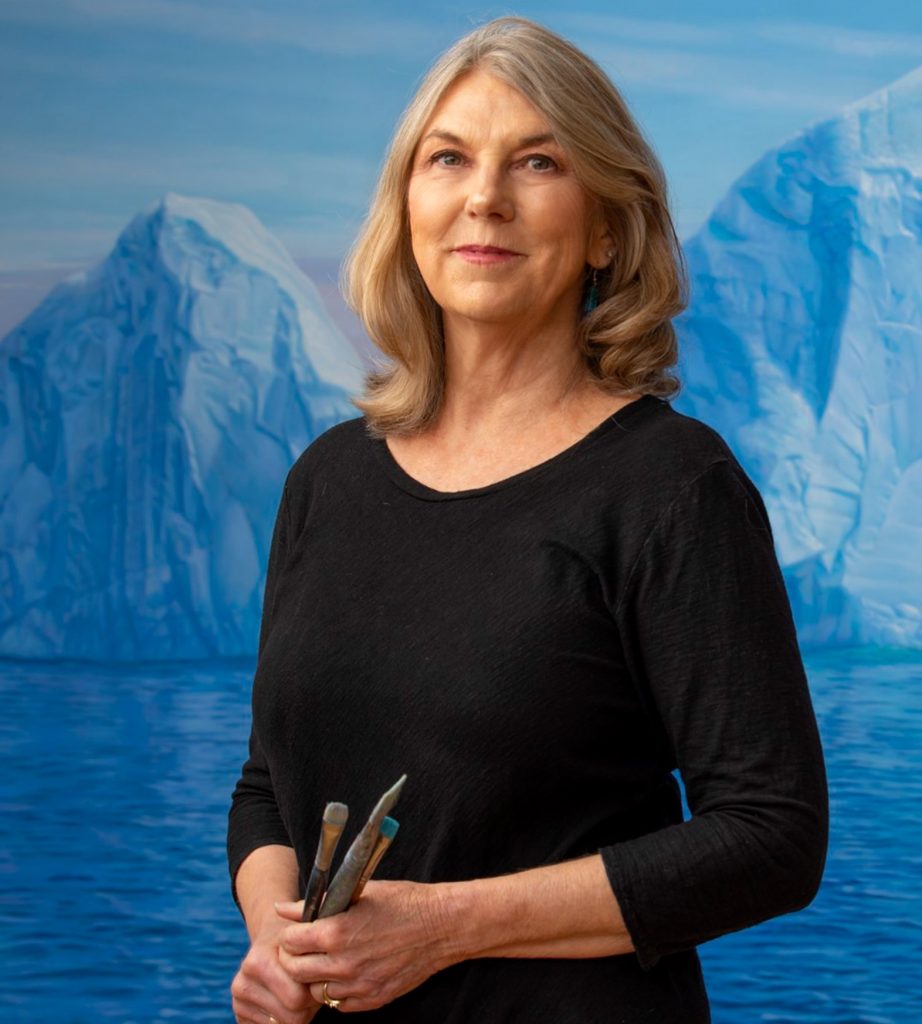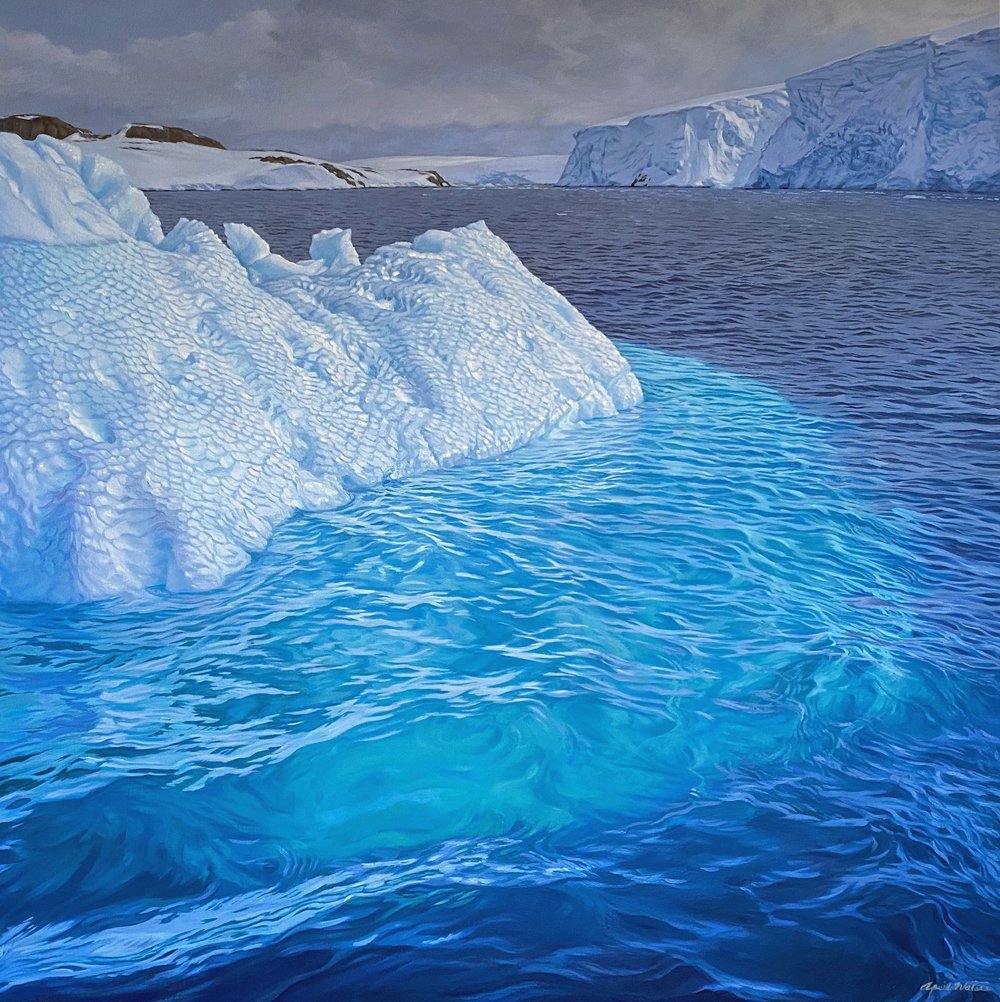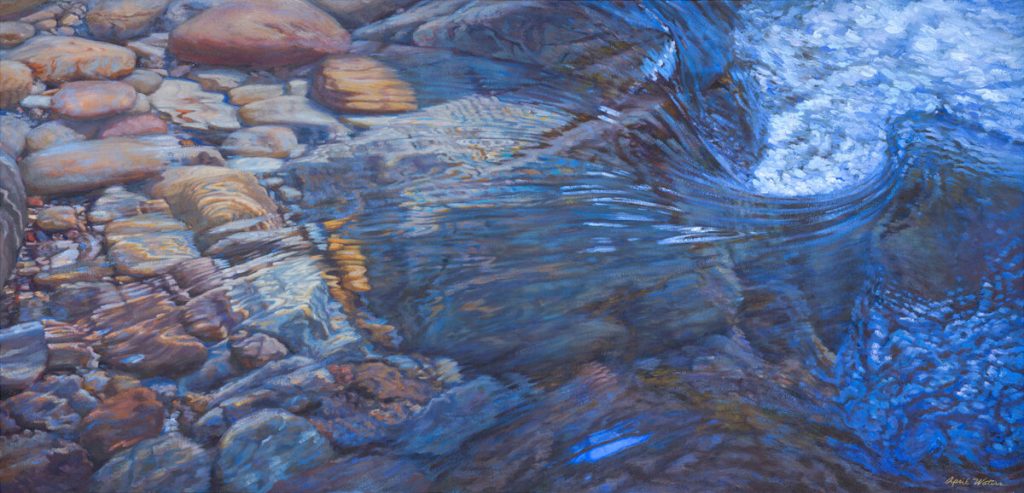Water’s Endless Beauty: an interview with artist April Waters
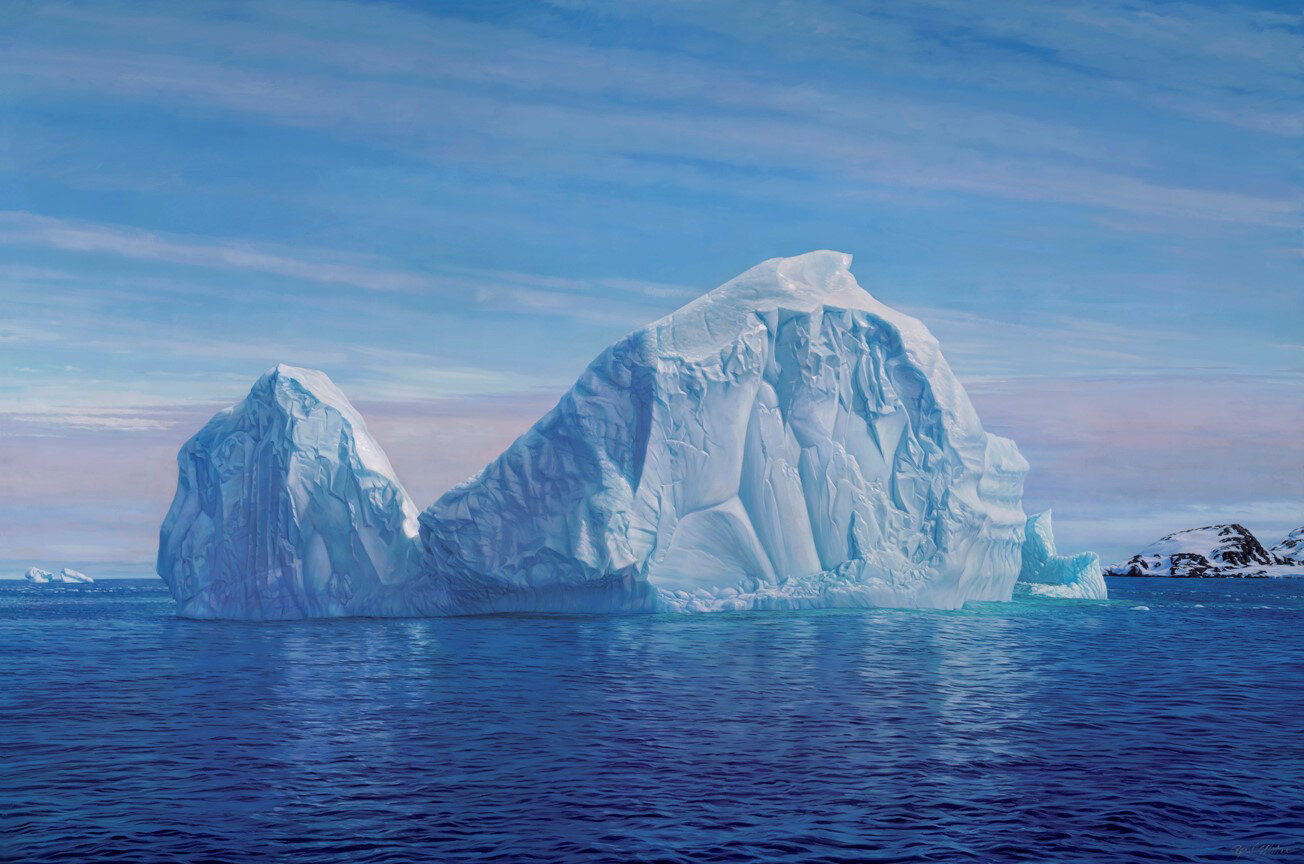
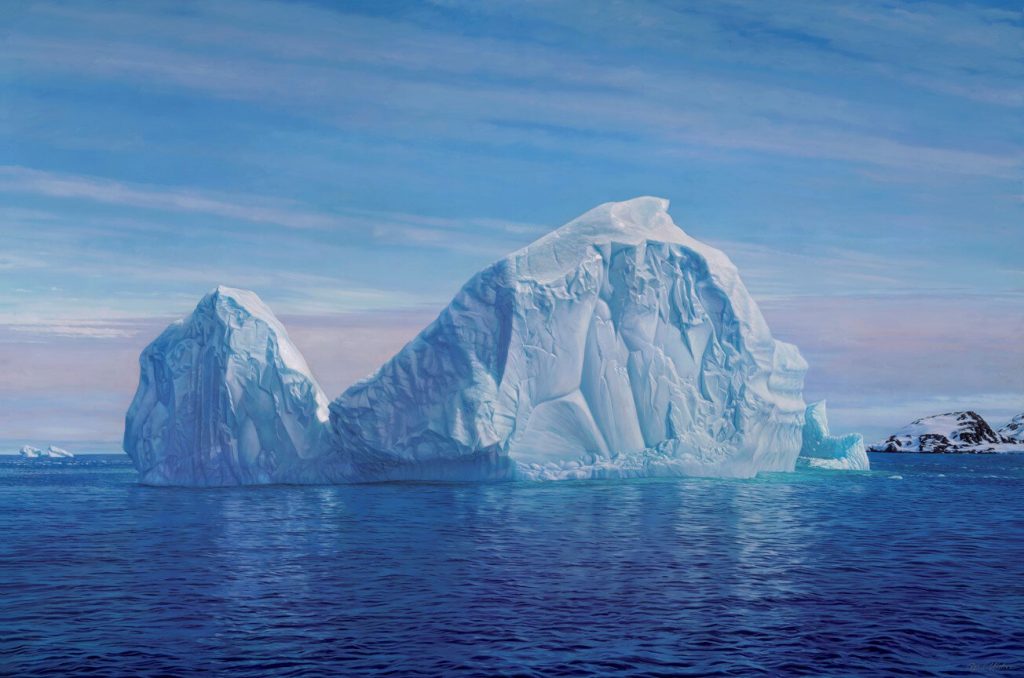
Inspiring artistic expression is one of the many ways that water impacts the human condition and experience. April Waters has mastered the art of painting aquatic scenes and has gained widespread acclaim for her work capturing the subtle beauty of nature. Her work and life experience are both testament to the beauty and power of natural waters.
April Waters paints in oils to capture the beauty of water. Widely known for her paintings that feature natural bodies of water, she is riding a crest of recent achievement and growing renown.
In 2018, she traveled to Antarctica as a grantee of the National Science Foundation’s Antarctic Artists and Writers Program. While stationed at a remote outpost on the Western Antarctic Peninsula, she studied, photographed, sketched and painted the majestic Marr Glacier, icebergs and surrounding oceanic scenery. The paintings from her adventure are currently featured in an exhibit at the Hallie Ford Museum of Art in Salem, Oregon.
WaterShapes editor, Eric Herman recently spoke with Waters about her work and the inspiration she finds at the water’s edge.
Growing up in southern California, did you spend much time at the beach?
I was born in Santa Monica where my grandfather was one of the original L.A. County Lifeguards. My parents spent a great deal of time at the beach with me in tow. The beach has always been an important part of my life as an environment where I reconnect with, and am renewed by, nature.
How do you describe the importance of the ocean in an urban environment?
It’s really the same regardless of where you are, whether you’re in a city or the wilderness. When you stand next to the ocean, you have a feeling that you’re on the edge of the unknown. The ocean is full of mystery and tremendous natural power. You’re in the presence of a massive force of nature.
You worked as a nurse. Was your interest in art a counterpoint to the stress of that career?
I started painting during my teens. I was interested in art and science and became a nurse in order to support myself as I developed a career in art. I started doing portraits and landscape commissions and was eventually able to devote myself to painting full time.
Does your experience in the medical profession have any lingering effect on your work?
Many of my paintings of local rivers and creeks have a calming effect upon those viewing them. Hospitals and healing environments acquire my paintings in order to create a nurturing and soothing environment. That is a special connection for me as a former nurse.
When did you start painting landscapes?
My first landscape painting was an evening view of Catalina Island and the ocean when I was 16. I studied painting with a couple of fantastic portrait artists in Laguna Beach who were also talented landscape artists. I then went on to get my bachelor of fine art at University of Colorado, Boulder. I’ve been painting portraits — many of environmental leaders –and landscapes, with water environments being my passion.
Clearly that path has led you to water.
I am enthralled with the reflective qualities of water, the shifting colors and patterns and the way it interacts with surfaces. Water is dynamic in that it can be calming, awe-inspiring, fascinating and threatening. I respect its power and presence.
Water is so many things at once! Every time you turn around or go to a different place near the water, there’s always something new. It’s so satisfying to be in those places – exciting, visually interesting and meditative. Being near water makes me feel alive and one with the place.
Now you’re living in Oregon, the Pacific Northwest must be an inspiration.
As an artist who loves to paint water, I am fortunate to live in Oregon where I am near rivers, creeks, wetlands, estuaries and the ocean. I’m drawn to the places where clear water interplays with rock, where rivers meet the ocean, and where I can kayak with the tides.
But you do like to move around to find new settings. Prime example, you traveled to Antarctica in 2018 and now there’s an exhibition of the paintings from that trip. What was that like?
Antarctica was amazing in so many different ways. It’s such a vast place. Antarctica is bigger than the United States by half. It’s challenging to fathom the immensity of it. I was at Palmer Station, a small research outpost along the West Antarctic Peninsula. It’s in the midst of a seemingly endless wilderness of ice, land and water. There’s nothing else for as far as you can see in every direction.
The only way to get to Palmer Station is by boat across the Drake Passage of the Southern Ocean, one of the harshest seas on Earth. It took four days of rough travel on the research vessel from Chile to reach my destination in Antarctica. I was thrilled to arrive to calm coastal waters, snow draped mountains, whales spouting and a vast landscape of ice and ocean.
Was it a challenge to choose the scenes you’d later paint?
I knew I wanted to focus on painting the Marr Glacier, ice, icebergs and the surrounding sea. It was fascinating learning about the different kinds of ice, how it grows, how it breaks down and how sea ice is an important factor in climate change. Being face to face with the Marr Glacier was breathtaking.
My journey was not only about how beautiful Antarctica was, but also that it is a fragile and rapidly changing environment. The West Antarctic Peninsula is one of the most rapidly warming places on earth. This summer I will be an artist in residence in Greenland, another rapidly warming and melting part of our planet.
In my exhibition at the Halle Ford Museum of Art, I have devoted an entire room to the research that’s being done in Antarctica and the ways that climate change is transforming the environment and impacting wildlife.
Are you trying to raise awareness about the importance of water through your work?
Rising seas, stronger storms and flooding rivers do affect our lives and those of our children and grandchildren. I’m interested in the beauty of water as well as the melting of the glaciers.
My path keeps leading me to unique experiences with water and painting is how I express what concerns, thrills and inspires me. As the internationally known marine biologist, Dr. Sylvia Earle says, “with every drop of water you drink, every breath you take, you’re connected to the sea.”











